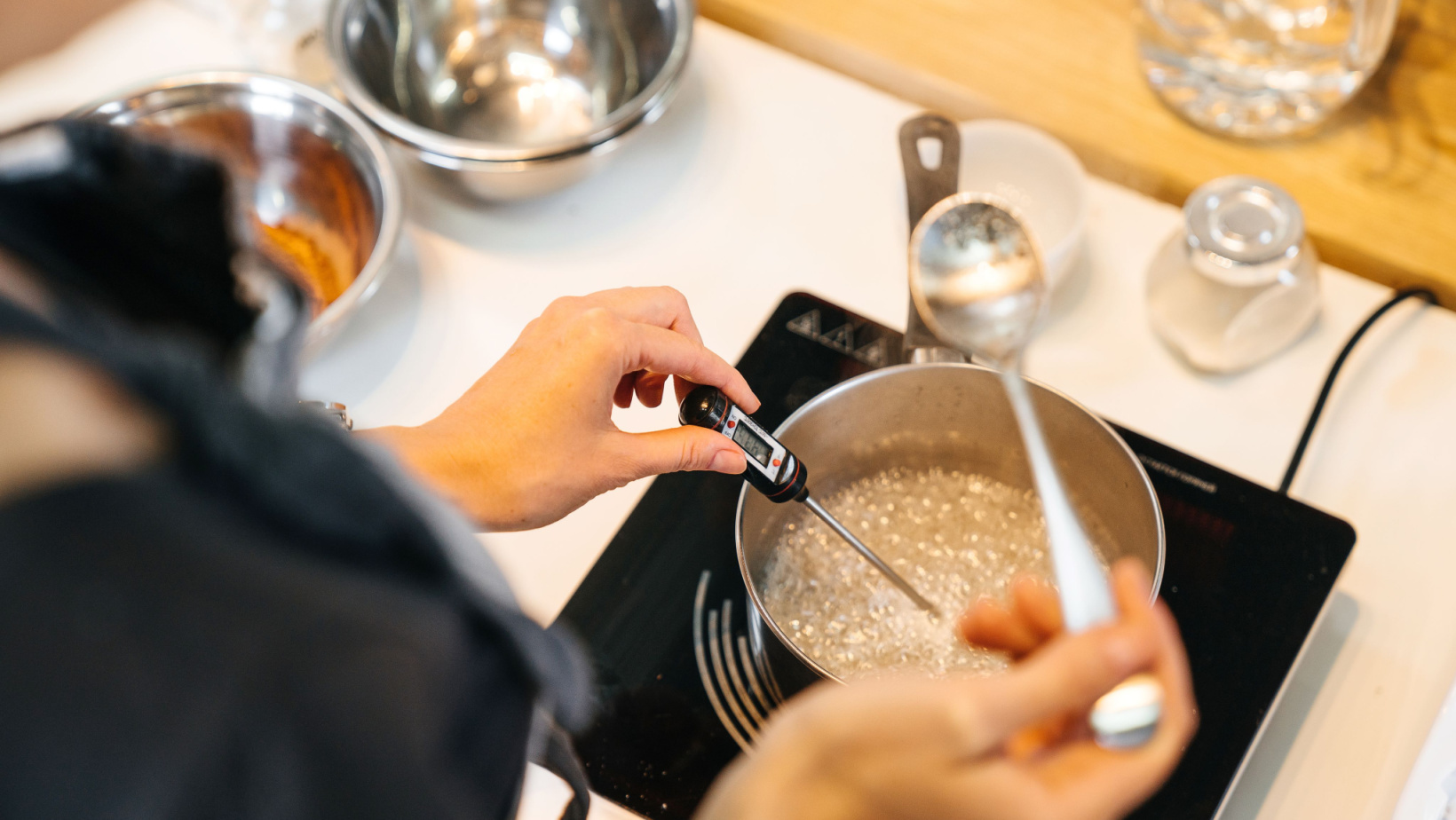The headline of this may seem like a TikTok “OMG I’ve been doing this wrong my whole life” style post. But in all reality it’s a question that we get pretty often. People are either having issues with heating certain ingredients. Their recipes are not coming out properly. Or down right they think the ingredients just don’t work. This is understandable, sometimes these ingredients work in an odd way and they can be confusing if you’ve never used it before. So let’s take a quick look at how to properly heat and measure the temperature of some hydrocolloids.
“Am I measuring the temperature properly?”
Measurement Mishaps
First let’s think about the types of thermometers that people use when temping a liquid in a pan. The first are some sort of probe thermometers. Whether it’s a submersible candy thermometer, A high temp probe, an instant read thermometer, or an adjustable 0-220 meat thermometer. These are going to be your best bet. Placing these into a hot liquid is going to give you a good understanding as long as they are calibrated. Another type of thermometer that people use is infrared thermometers. These thermometers take the surface temperature of whatever it is you are heating. So if this is a thermometer that you are choosing to use then you must be mixing the contents of the pan constantly while taking the temperature. But to get the most consistent read we suggest using a probe thermometer.
An issue that we find people don’t take into account is that the temperature at the bottom of the pan is different from the temperature at the top of the pan. With water or thin liquids This is not much of an issue. If you were attempting to make a gummy or have a liquid that is very viscous you will find some discrepancies. Some people will stick the thermometer all the way down to the bottom of the pan. The bottom of the pan is in direct contact with the heat source which means that it is going to be the hottest part. To get the most consistent reading you can remove the pan from the heat and stir for 30 seconds before taking the temperature. Also be sure to temp directly in the center of the pan and about halfway to the bottom in depth.
Another issue people encounter is with certain hydrocolloids. These ingredients hydrate, gel and melt at high temperatures. Many of these gelling Ingredients begin to gel at 165°F. To further complicate this issue some of these ingredients also thicken cold liquids. When a thickened liquid is heated it will heat slowly and unevenly. There are instances when the bottom of the pan reaches 180°F but the top of the pan is still at 150°F. What happens here is that the mixture of water and hydrocolloid at the bottom of the pan is hydrated. This means that if it is cooled it will create a gel. So when you mix the 180°F liquid with the rest of the contents it will get very stiff or begin to look clumpy. This is where we see issues with some ingredients. Thankfully the fix is very simple. Be sure to take the temperature of the liquid in the dead center of the pan about halfway to the bottom in depth. Keep these mixtures on low until every reading you get is above 180°F. It is absolutely fine for these ingredients to go all the way to 212°F or higher depending on the recipe. To avoid a half gelled, lumpy mess, we suggest heating it slowly and stirring infrequently.
If you have run into any issues with heating hydrating hydrocolloids, reference guide as a handy reminder. And until next time keep cooking!


